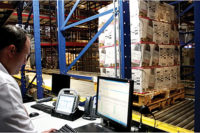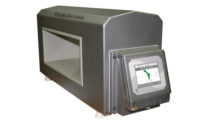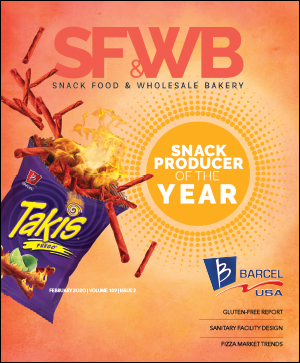Logistics software beats the baking and snack odds










However, advances such as cloud-based computing technology and related mobility solutions are now available to help food producers more effectively move goods from Point A to Point B. In fact, logistics software now covers the extended supply-chain network, so collaboration can occur between customers, carriers, suppliers, copackers and third-party logistics providers. The result is more integration between warehouse, transportation and workforce applications. Yet, experts agree that there is no one-size-fits-all solution.
Getting specific
Product lot tracking and a manufacturer’s specific best-by dating code requirements often present challenges to software providers and developers, admits David Meyers, principal at Tompkins International, Raleigh, N.C. “With the host of governmental regulations, as well as internal product quality goals, there are few logistics software solutions that can accommodate these needs out of the box,” he says.
Software providers must take extreme care to ensure that they understand a company’s business, functional and technical requirements, so they can translate them into an effective solution, he adds. The resulting solution must be validated against those requirements from its design to its development, testing and deployment.
It’s critical that baked goods are managed in a real-time, fast-moving environment because freshness matters, adds Tom Kozenski, vice president product strategy at RedPrairie, Alpharetta, Ga. “Plants are often small, so space utilization is important,” he notes. “Stock rotation is required to ensure item freshness and eliminate potential for expired inventory, so FIFO (first in/first out), FEFO (first expired/first out), LIFO (last in/first out) and LEFO (last expired/first out) concepts need to be supported.”
In addition, small production runs create the need for strong pallet and tray management. Bakeries and snack manufacturers don’t have the luxury of staging 40 pallets of the same item/lot combination.
Cloud computing
As for advances in logistics software, Meyers says Software as a Service (SaaS) and cloud computing have seen increased adoption rates over the last few years. These emerging alternatives in software deployment have the potential to help bakers and snack producers realize more rapid implementations, lower startup costs and greater scalability.
Meyers advises caution when using SaaS for mission-critical supply-chain processes, even if the window of downtime or loss of availability is small, as they could lead to business disruptions. “However, transportation planning and management, supply-chain visibility and trading partner collaboration platforms are ripe for SaaS across the board,” he says.
Logistics software vendors recognize that the demands of bakers are different from those of snack producers or direct-to-store-delivery (DSD) businesses and that the demands of regional operations are different from those of national operations, says Steven Marbach, client development consultant at Salient Management Co., Horseheads, N.Y.
For example, a three-day shelf life affects how a product must be sold and shipped to protect its freshness. As a result, logistics software is becoming more flexible, even highly customizable; some vendors even offer different products based on the size and type of business.
Advances in wireless wide area network-based (WAN) communications, global position system (GPS) geo-fencing/geo-location software and cloud-based capabilities all offer improved logistics capabilities, says Brian Schulte, director of industry marketing at Intermec, Everett, Wash. “These advances allow real-time product availability information in stores at the time of order, quicker input of orders into production and truckload planning systems and better monitoring of route activities,” he explains.
Improving the supply chain
Bakers and snack producers interested in moving product more efficiently will find a variety of software capabilities available to them, says Chris Nelson, director of product strategy at HighJump Software, Minneapolis, such as the following:
• Automated order picking and transportation management. These applications help companies cut logistics costs, reduce their on-hand inventory and maintain a high level of customer service. For example, several large bakeries and snack distributors are increasing their use of cross docking, while relying on computer technology to help with ordering, picking (including voice picking), routing and managing their inventory movement.
• Hand-held and tablet computers, GPS and cellular communications. These capabilities play an integral part in increasing productivity and cutting costs. They allow salespeople and drivers to submit orders back to the plant immediately or view inventory levels on the truck or at the warehouse, which helps set expectations with customers.
• Route optimization. Many bakeries and snack manufacturers have static routes, allowing the same driver to build a relationship with the customer. However, for large companies and customers, distributors are using dynamic routing, which determines routes based on sales, load size, re-stock frequency or other parameters, helping to facilitate delivery and reduce fuel costs.
• Performance management. Today’s supply chain is no longer a controlled entity within a warehouse or manufacturing plant. Rather, it’s a network of resources, scattered among cities and countries. “To be effectively managed, a company must be visible across the network,” Nelson explains. “Performance management tools and graphical reporting solutions help companies make better decisions about operations and profitability by providing real-time access to key supply chain trends.”
Today’s software innovators are focusing on creating products that ensure the management of quality across the entire food chain, says Doug Fair, vice president of technical services for InfinityQS International Inc., Chantilly, Va. “For example, a farmer can use a cell phone to enter critical quality and food-safety data,” he says. “That data can be immediately transferred to a shared database where concerned parties have instantaneous access to it.
“These same software leaders are leveraging cloud-based computing technology that requires no software installation. Instead, quality data entry and analysis is managed through the Internet.” The result is the ability to aggregate data across the entire value chain, he adds, thus ensuring ensures high levels of traceability and making data access both simple and powerful.
Marback sees predictive analysis as a key trend in logistics software applications for bakeries and snack producers. “Predictive analytics help aggregate orders by [stock-keeping unit] SKU and maximize line/plant efficiency,” he says. “Also, many route drivers now collect shelf inventory data that, in turn, is used to help minimize returns (stales) by calculating a suggested order at the stock-keeping and customer level.”
Integrating logistics data with sales and finance is another trend, he adds. For example, GPS location data is often used to track trucks and improve fuel efficiency. This information can be used to generate a dynamic customer profitability profit and loss statement (P&L) by store.
On the horizon
Increased data visualization and mobility solutions are some of the software advances on the horizon, experts agree. The use of mobile devices (smartphones and tablets) will grow quickly for supply-chain executives, warehouse supervisors and inventory control clerks, predicts Kozenski. He also sees more sophistication related to workforce management and for forecasting, budgeting and staff scheduling.
“Mobility solutions are continuing to evolve and provide real value to the industry,” says Meyers. “The decreasing costs and greater capabilities of tablets and smart devices are putting more actionable information into the hands of the people who need it. This is true for folks who work inside the plant, the distribution centers and throughout the logistics network, including the drivers of delivery trucks.”
Also, the emergence of expanded software offerings that holistically target the direct-store-delivery (DSD) market that most snack and baked goods manufacturers operate in will become more evident in the software marketplace, he adds.
Schulte sees continued advances in imaging, data visualization and voice-based solutions that allow greater capabilities for direct-store-delivery (DSD) route-based systems. “Imaging and voice will continue to offer greater efficiency, accuracy and capability out on the route and in truck staging/loading,” he notes. “Data visualization will allow better management of ‘big data’ and quicker identification of exceptions and opportunities that could benefit from immediate action.”
Looking for a reprint of this article?
From high-res PDFs to custom plaques, order your copy today!












